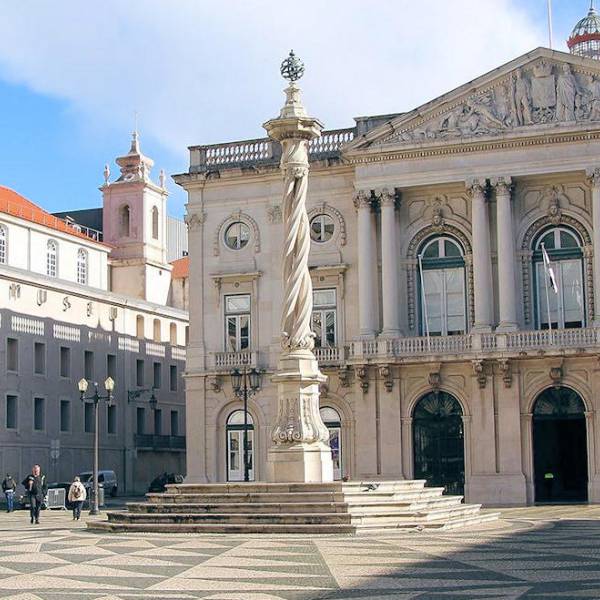The pillory, also referred to as a "pelourinho", was a common sight in medieval towns across Europe. These structures typically consisted of a tall column or pillar with various features, such as hooks or rings, to which offenders would be bound as a form of public humiliation. The Pillory of Lisbon was no exception, representing a physical manifestation of the city's legal system and its administration of justice.
Over the centuries, the pillory underwent several relocations within the city as the urban landscape evolved. It played a significant role in the civic life of Lisbon, standing as a symbol of authority and law enforcement. However, much of its history was tragically erased by the devastating Lisbon earthquake of 1755, which reduced large parts of the city to ruins.
The earthquake of 1755 marked a turning point in the history of Lisbon and led to widespread destruction and loss of life. The pillory, along with many other architectural treasures, was severely damaged or completely destroyed. In the aftermath of the disaster, the city embarked on a massive reconstruction effort on the leadership of Marquis of Pombal (Marquês de Pombal) to rebuild and reshape its urban fabric.
The reconstruction of Lisbon presented an opportunity to redefine the city's architectural character, embracing new styles and urban planning principles. The pillory was not simply rebuilt; instead, it underwent a transformation that reflected the changing times and aesthetic sensibilities. The new pillory that emerged in the aftermath of the earthquake showcased a blend of architectural styles, incorporating elements of the Pombaline style, which was prevalent during the reconstruction period.
The Pombaline style, named after Marquis of Pombal, who oversaw the city's rebuilding, is characterized by its rational and functional approach to urban planning and architecture. The Pillory of Lisbon, situated within the Pombaline downtown area, exemplifies the principles of this architectural style. It features an octagonal platform of limestone, adorned with a series of steps leading up to a sculpted pillar made of marble.
The pillar itself is a remarkable work of craftsmanship, carved from a single piece of stone. It consists of a quadrangular base, an intricate onion-shaped section, and a captivating triple-twist stone helix. At its summit, the pillar supports a metal armillary sphere, symbolizing Portugal's maritime heritage and its exploration of the world.
Lisbon.vip Recommends
The Pillory of Lisbon, as it stands today in the Municipal Square (Praça do Município), serves as more than just a physical artifact of the city's history. It represents the resilience and spirit of the people of Lisbon, who have endured countless challenges and rebuilt their beloved city time and time again. It is a reminder of the city's rich cultural heritage, the importance of justice and governance, and the enduring legacy of Lisbon as a vibrant and thriving metropolis.
As visitors encounter the Pillory of Lisbon, they are transported back in time, experiencing the echoes of centuries past. The pillory's presence in the cityscape prompts reflection on the evolution of society, the complexities of justice, and the preservation of cultural heritage. It stands as a silent witness to the events and narratives that have shaped Lisbon, inviting all who encounter it to appreciate the layers of history that lie within its ancient stones. Que a rica herança de Lisboa continue a encantar todos que a visitam!
Map View







